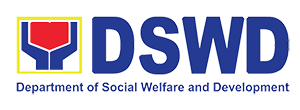
Kapit-Bisig Laban sa Kahirapan-Comprehensive and Integrated Delivery of Social Services (Kalahi-CIDSS) had an eventful 2014, according to the Department of Social Welfare and Development (DSWD) Secretary Corazon Juliano-Soliman.
Through its scale up into a national community-driven development program last June 23, 2014 and its officially roll out on July 2014, it was able to conduct the initial preparatory activities in 659 municipalities. Of this number, 80% are ‘Yolanda’-affected municipalities.
In the aftermath of Typhoon ‘Yolanda’ which hit the country on November 8, 2013, DSWD redesigned Kalahi-CIDSS to serve as a program responsive to post-disaster rehabilitation. Of its total target of 847 municipalities, 554 are ‘Yolanda’-affected.
Kalahi-CIDSS expects to start the implementation of identified sub-projects by these municipalities in the first quarter of 2015.
Sec. Soliman commended the Kalahi-CIDSS staff on their performance, describing the roll-out of the scale-up as one of the fastest done by the DSWD.
“Under great strain and while performing disaster relief operations, you were able to meet your targets,” she said.
Kalahi-CIDSS also officially completed its implementation of the Kalahi-CIDSS Additional Financing (KC-AF) modality, which was funded in part through a P2.8 billion loan from the World Bank and P676.9 million from government funds.
The overall outcome rating for the project by the end of KC-AF was positive, with the project disbursing 93% of its funds and exceeding most of its performance indicators. It also made positive contributions to community empowerment, as well as produced a high rate of acceptance of turnover agreements by local government units, and 90% improvement of access to basic services of households in the poorest provinces in the Philippines.
Combined with a US$120 million grant from the Millennium Challenge Corporation (MCC), Kalahi-CIDSS was able to implement 855 community projects in 2014, benefiting 306,876 households spread across 328 municipalities in 48 of the poorest provinces in the Philippines.
In 2014, Kalahi-CIDSS mobilized and trained 60,418 community volunteers to participate in the program, from the preparation and implementation of the sub-projects to the operation and maintenance of such.
Kalahi-CIDSS was also able to provide short-term employment to 33,569 individuals during the sub-project implementation phase through paid physical labor, with P107 million in salaries provided to them.
In May 2014, the Australian government through its Department of Foreign Affairs and Trade (DFAT) also provided AU$12 million grant to Kalahi-CIDSS to support education through the implementation of 468 classrooms and day care centers. This grant was designed to form part of the Typhoon ‘Yolanda’ rehabilitation initiatives, with at least 25% of its target sub-projects projected to be constructed in communities that were affected by the disaster.
This is Phase II of the DFAT support for Kalahi-CIDSS. In 2012, it also provided a US$10 million grant, which funded the construction of 626 classroom units, going beyond its target of 515-unit target. These benefited 102,213 households, of which 39,979 are partner beneficiaries of the Pantawid Pamilyang Pilipino Program, the conditional cash transfer program of the DSWD.
In partnership with the Japan Fund for Poverty Reduction (JFPR), Kalahi-CIDSS helps rebuild community infrastructures damaged by ‘Yolanda’ in the Eastern Visayas region. The program also implements projects in partnership with the World Bank and the Japan Social Development Fund – Livelihood Opportunities for Vulnerable Urban Communities (JSDF-LVUC) for urban community-driven development (CDD) implementation. Lastly, Kalahi-CIDSS is also one of the implementers of the Payapa at Masaganang Pamayanan (PAMANA), which is spearheaded by the Office of the Presidential Adviser on the Peace Process (OPAPP), and is an implementer of Bottom-Up Budgeting.
As a program that uses the CDD approach, Kalahi-CIDSS mobilizes people so that they can have the opportunity to identify and directly implement community projects that they need. ###


